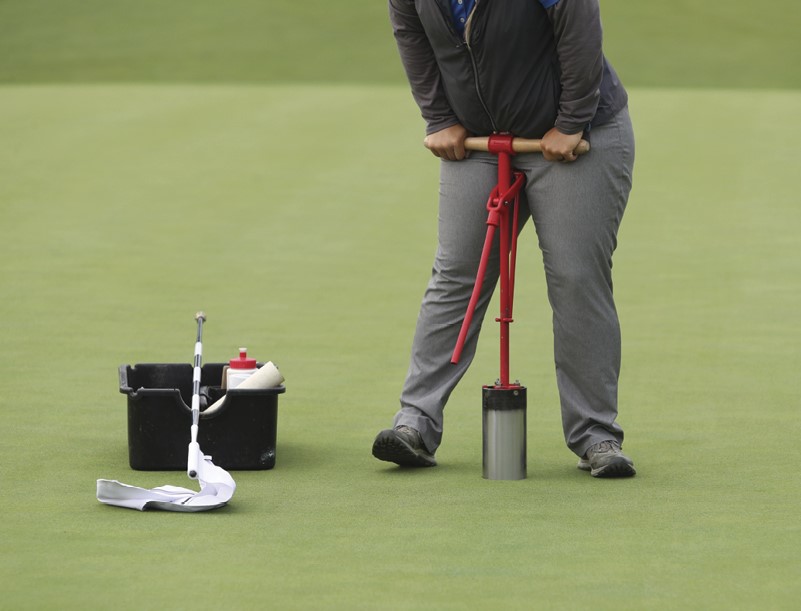
The surprisingly positive impact of the COVID-19 pandemic on the golf industry has been widely documented. Less clear is its impact on the status of the golf course superintendent. A hunch tells me that in some ways their status has improved.
In terms of the rounds count, public facility tee sheets, equipment sales and the enrollment lists at most private clubs, the last two and half years have been an unexpected boom time after years of a slow decline in the golf trade. For a while, maintenance got easier in terms of course set up thanks to no bunker rakes, less emphasis on flawless grooming, and golfers simply thrilled to be outdoors, even if they were playing to a hole in the ground with a rubber collar around it.
Of course, the industry also had to put up with more golf cart traffic, much of it in the form of single riders trying to avoid infection from their golf mates. The day-to-day travails of simply managing labor were compounded by heightened attention to cleanliness as well as the need to keep laborers safe. And just rousing up a capable crew each day became increasingly difficult due to labor market dislocation and the pervasiveness of infection rates.
We’re not out of the pandemic completely and probably never will be. But at most clubs I see and hear about, there’s a clear sense that folks are acting as if things are normal. Mask use is down. There is a lot more indoor socializing. Group events are back. And the still-very-strong number of major golf course renovations and restorations suggests that club managers have a lot more faith in the future than was the case three — or even 15 — years ago.
Yeah, it’s still hard, if not impossible, to find qualified assistants in the recruitment pipelines. Positions now go unfilled for a year or more, and if filled, it’s often by fresh-scrubbed turf school graduates who in the past would only have qualified as trainees. Course managers now also spend a lot of their time simply juggling schedules among staffers willing to work 30 hours a week and hardly, if ever, on weekends. At least there’s comfort knowing retirees from other trades are often willing to work, and at an efficiency level derived from their own career paths.
I’ve also noticed that at many clubs the superintendent now has higher standing with the membership. Gone is the image of the greenkeeper as a dirt farmer in overalls. And even if most regulars couldn’t find the maintenance building, they at least recognize the superintendent around the clubhouse or grounds, exchange pleasantries and even compliments, and appreciate their input on major decision-making.
Only serious data analysis can determine if superintendents are starting to be paid commensurate with their more elevated status. But I see at many clubs that their advice is taken seriously. Their presence at green committee and board meetings is now standard. Their wisdom as to general course condition or the shelf life of various infrastructure elements (drainage, irrigation, sand, turf types) is weighed seriously before policy and spending decisions are made.
There’s still a lot of mystery among golfers as to what goes into day-to-day maintenance. In part, that’s because most golfers have unrealistic expectations about their own golf games and the hubris carries over into their expectations of how the golf course should appear.
The gap between the retail golfer’s grasp of agronomy and what superintendents know to be the case is also due to the highly technical nature of the trade. There’s also the inherent nature of the practice — that the success or failure of one or another turf type in a climate is due so much to microclimate, specific soil types, and conditions unique not just to this or that golf course but to small areas in corners of the property.
Golfers and decision makers on such matters want quick, simple, comprehensive answers. Experienced superintendents know this is never the case and tend to have to go into long, detailed explanations as to why things are the way they are out there. That basic dichotomy will never go away.
What has changed — marginally but strategically — is the esteem and value that superintendents are held to at facilities. They’re not just essential workers. They have become essential professionals.

Explore the August 2022 Issue
Check out more from this issue and find your next story to read.
Latest from Golf Course Industry
- Audubon International announces newest leadership appointees
- Southern golf trifecta
- Sports for Nature Framework gains new signatories
- Camiral Golf & Wellness upgrades Stadium Course
- Troon selected to manage The University Club of Milwaukee
- Kafka Granite adds new business development manager
- GCSAA celebrates 10-year anniversary of collaboration with Congress
- DLF launches new seed enhancement solution





